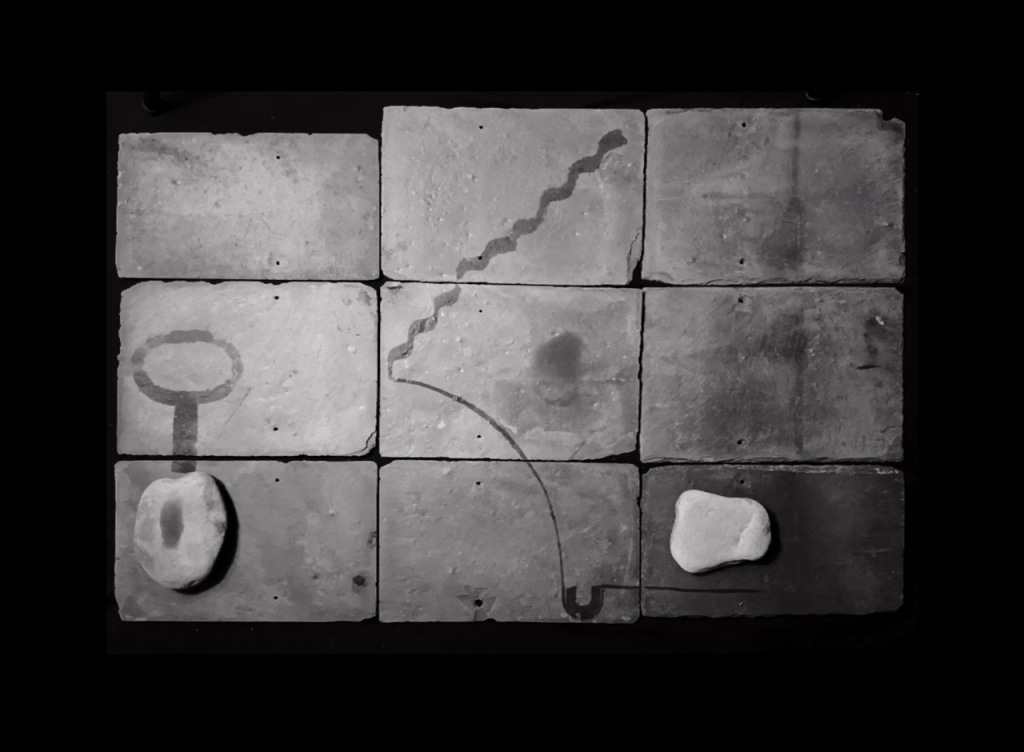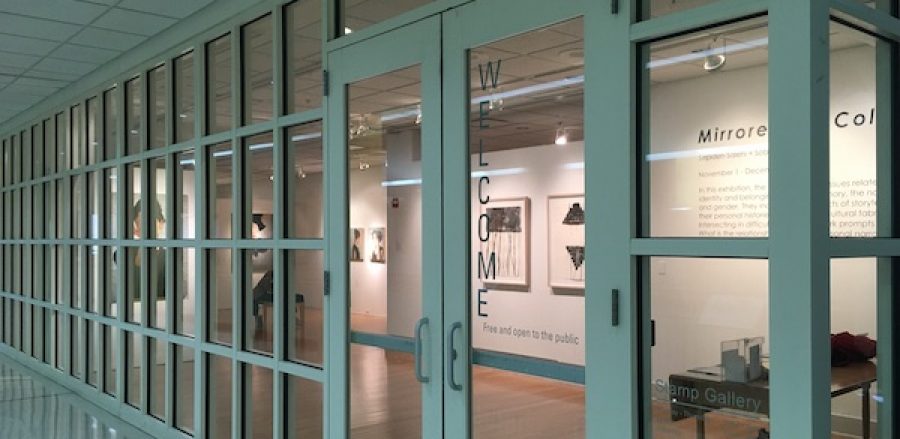Peace in Practice
Posted: November 8, 2023 Filed under: Artist Interviews, Current Exhibition, Explore, Uncategorized | Tags: art, contemporary, Contemporary Art, installation, nature, sculpture, stamp gallery, technology, UMD Leave a commentPlaceholder from October 10, to December 9, 2023, at The Stamp Gallery | University of Maryland, College Park | Written by Trinitee Tatum
“There is enough multitudes in all of us.”
(Richard Hart, 2023)
In our digital age, words like “software” and “hardware” have clear-cut meanings. However, when these words are superimposed and incorporated into the conversation on the relationship between nature and technology, the essence of these “wares” deepens. Preconceptions of the meanings of software and hardware are challenged through their convergence in Richard Hart’s series of “Water Drawings.” In this series, real rocks are placed alongside projections of patterns that emerge and disappear on the rock’s surface. By juxtaposing the “software” of animation to the “hardware” of rock as durable and utilitarian material, Hart exposes time as a third “ware.” The interconnectedness of software, hardware, and “timeware” parallels the dimensionality of humanity through the mind, body, and soul.

The South African artist’s works traverse both the digital and physical realms, exploring modernity’s spectral quality. Although he contends with weighty subjects, Hart taps into his easy going personality and creative ethos as he grapples with the Duality of nature technology and the materiality of time. His work exudes a playful quality as patterns dance across the crevices of rocks, conversing with the materials and the artist. Technology has had a profound impact on the natural world in many ways. On one hand, technological advancements have led to renewable energy and sustainable agriculture. On the other hand, the rapid development of technology has led to pollution, deforestation, and climate change. Time will tell what the final outcome of this relationship will be.
“The best work dances around things, points at things very slyly.”
(Richard Hart, 2023)
Hart is ready to face the challenge of dealing with such daunting realities in his artwork, despite there being no satisfying answers. However, Hart’s creative process relies heavily on experimentation and problem-solving skills. Creating this artwork is a demanding task; setting up alone may take hours, and the drawings themselves must be done in one sitting. Despite the intense time constraints, the process is meditative, and Hart can easily get lost in the work. The “Water Drawings” offer a respite in a chaotic world.
The concept of placehood is crucial in location-based art like this series. Many of the larger rocks require on-site work, either in nature or on the sides of buildings. Even the “Water Drawings” done in the studio are influenced by place. The artist’s work is greatly influenced by his home country, South Africa, but his move to New York has introduced another sense of place and initiated a conversation about one’s place in the world. While transitioning from Africa to America, Hart had to adapt to a new culture and environment different from his own. He also had to consider that his audience may view his work differently than he does.
“Place is the whole thing. It is where the whole thing is situated.”
(Richard Hart, 2023)
Reflecting on one’s sense of placehood has never seemed more important or relevant than when facing the complex and interconnected issues that challenge our current state of global affairs. In the face of crisis, the value of preserving and cultivating the unique identity and cultural significance of a place is imperative. In safeguarding our local identities, cultures, and environments, we create a more resilient, inclusive, and sustainable world.
Richard Hart’s work is included in Placeholder at The Stamp Gallery of the University of Maryland, College Park, from October 10 to December 9, 2023.
- For more information on Richard Hart, visit https://www.instagram.com/richardhartstudio/.
